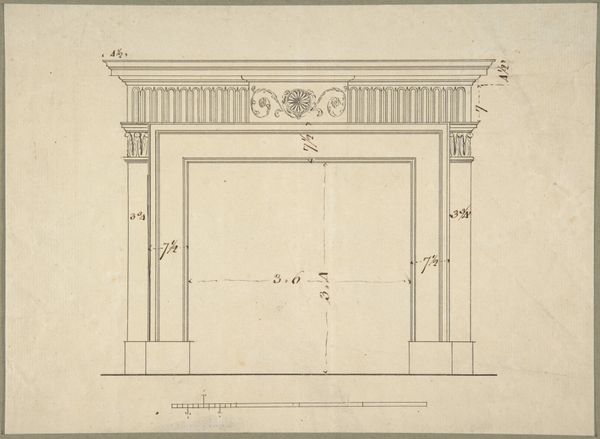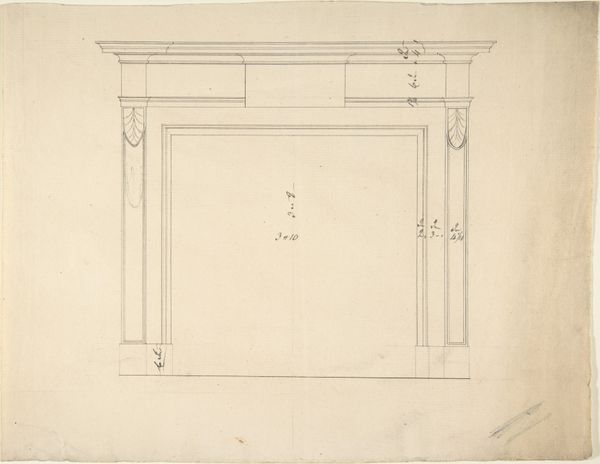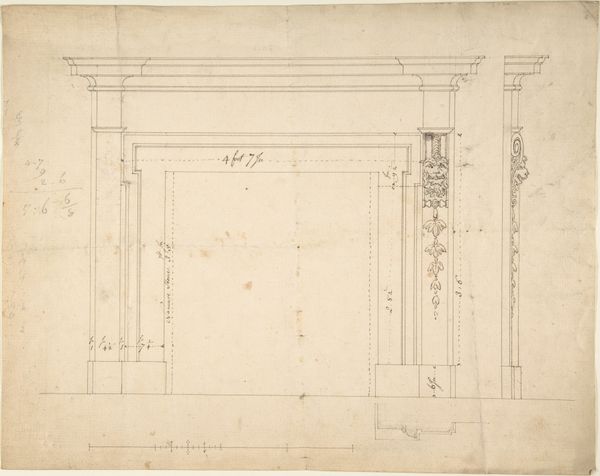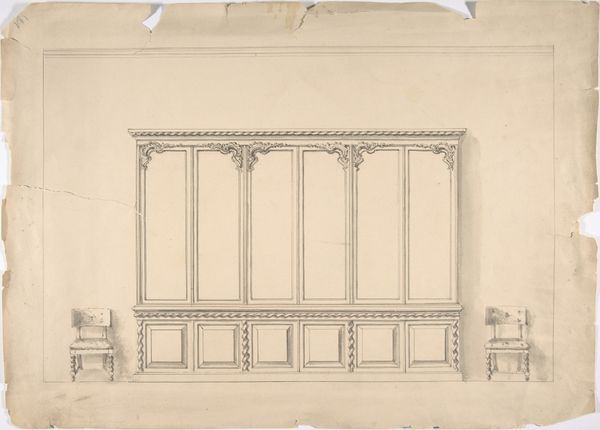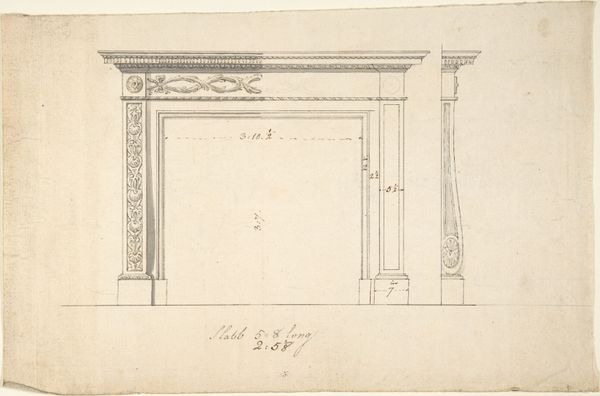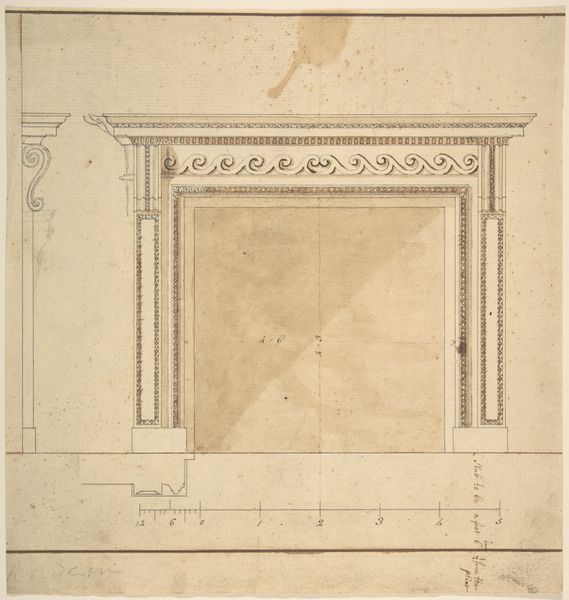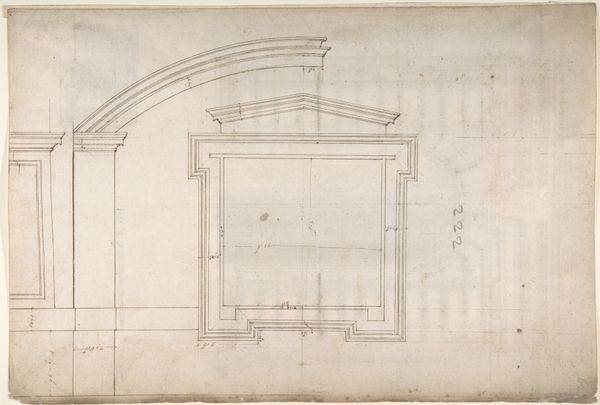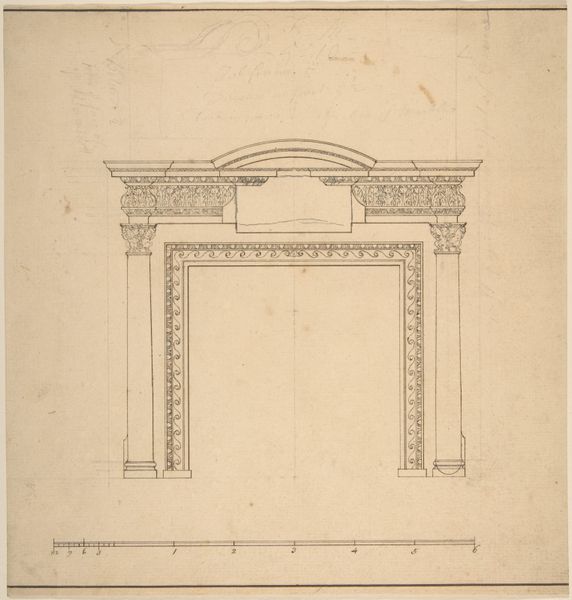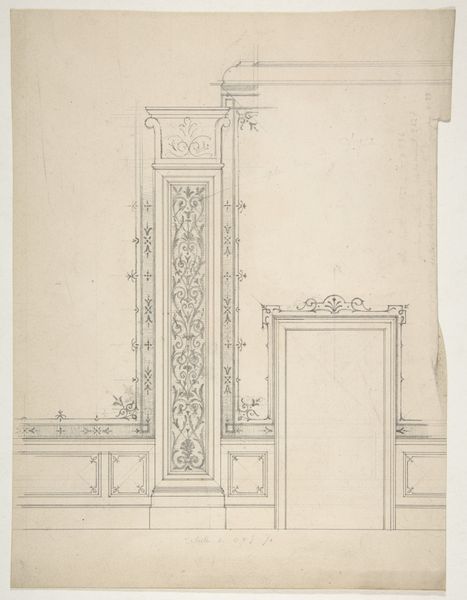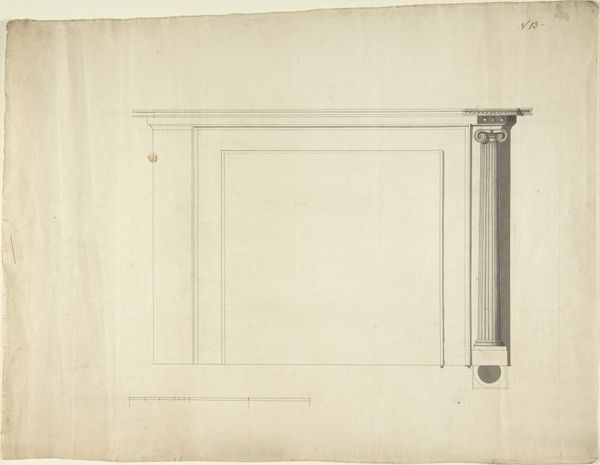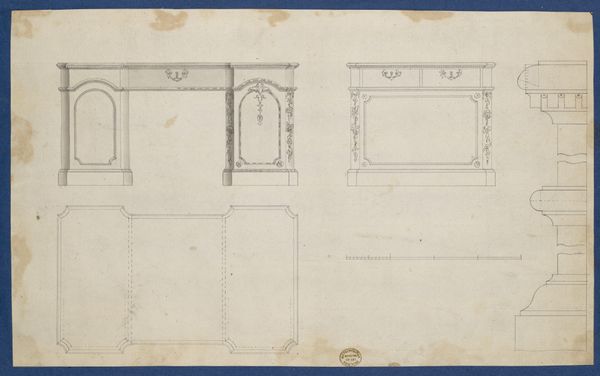
drawing, architecture
#
drawing
#
neoclacissism
#
form
#
geometric
#
line
#
architecture
Copyright: Public Domain
Sir William Chambers, a towering figure in British architecture, rendered this chimneypiece design in pen and ink, likely in the latter half of the 18th century. It offers a fascinating window into the aesthetic sensibilities of the Georgian era and the institutional framework that shaped them. Chambers' design, with its classical proportions and ornate detailing, speaks to the prevailing taste for Palladianism and the broader Neoclassical movement. This style, promoted by institutions like the Royal Academy, where Chambers served as treasurer, sought to revive the grandeur of ancient Greece and Rome, reflecting Britain's growing imperial ambitions. The chimneypiece, more than just a functional object, served as a focal point of social display, symbolizing the wealth and cultivated taste of the homeowner. Through studying architectural drawings like this one, alongside period treatises and accounts, we can better understand how the built environment reinforced social hierarchies and projected cultural values in 18th-century Britain.
Comments
No comments
Be the first to comment and join the conversation on the ultimate creative platform.
